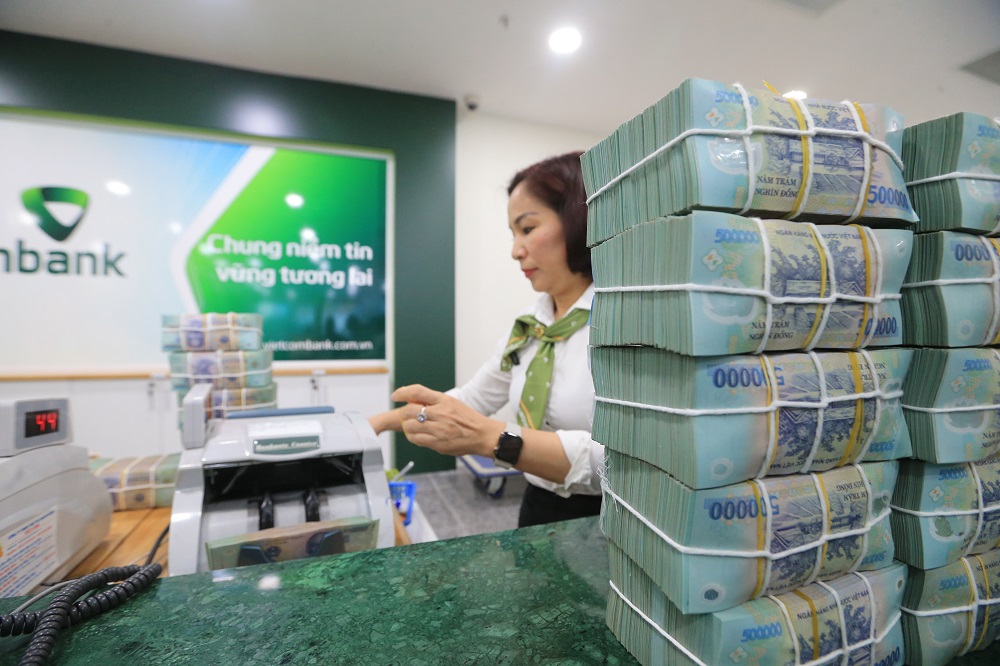Will policy rates be cut even more?
HSBC expects the State Bank of Vietnam (SBV) to deliver one more 50bp rate cut in this easing cycle, sometime in 3Q23, to further support growth.

Deposit and lending rates have decreased as a result of SBV's policy rates.
>> Further interest rate cuts hoped to fuel money flows into real estate
What happened?
2023 has been a tough year for Vietnam’s economy. Amid intensifying downside risks to Vietnam GDP growth, the SBV has decided to loosen monetary policy further. In less than three months, the SBV has delivered surprising cuts to its policy rate three times, each time of 50bp.
After becoming the first Asian central bank to cut its policy rate in early April, the SBV cut again in late May before making another announcement on 16 June, 2023. Effective from 19 June, the SBV’s refinancing rate will be 50bp lower, at 4.5%.
Accordingly, other key rates will be lowered too: the discount rate will be cut by 50bp to 3.0% while the overnight lending interest rate in inter-bank electronics payment will be lowered to 5.0%. Meanwhile, the maximum interest rate to demand deposits with terms of less than 1 month will be kept unchanged at 0.5% per year, but demand deposits with a term of between 1 and 6 months will be reduced by 25bp to 4.75% per year.
Economic implications
The decision on 16 June is a clear reflection of the SBV’s urgency to further support growth via the credit channel. This will continue to reduce financing costs for businesses and households, thus spurring business investment and supporting consumer sentiment.
Undoubtedly, 2023 has been a tough year for Vietnam’s economy. After seeing sharply slowing growth of only 3.3% y-o-y in 1Q23, Vietnam continues to brace for strong headwinds. While high frequency indicators point to no further deterioration, there are also no clear signs that Vietnam’s economy is bottoming out.
HSBC said sluggish external data would remain the biggest downside risk to Vietnam’s economic growth. Exports have fallen by over 10% y-o-y YTD, with broad-based weakness. All major shipments, including consumer electronics, textiles/footwear, machinery and wooden furniture, all suffered sharp double-digit declines, with no meaningful reprieves. In particular, Vietnam’s exports to the US, its largest export destination with a share of 30%, have plunged by close to 20% y-o-y YTD.
Despite external woes, in HSBC’s view, Vietnam’s services sector remains a bright spot, partially shielding some weakness to an extent. However, there is a clear divergence between big ticket items, including automotive sales and tourism-related services. On a 3-month-moving average, the former plunged over 40% y-o-y, almost on par with that during the lockdown period in 2021. This suggests weakness in the external sector has filtered through to private consumption.
Encouragingly, Vietnam continues to see a positive influx of tourists. Vietnam has welcomed close to 1 million tourists in the past two months, equivalent to 70% of 2019’s levels. Two of its major sources of tourism merit attention. Korean tourists have recovered to 80% of the prepandemic level, but the ratio stands at only 35% for Chinese tourists.
>> Expectation of further policy rate cuts
Fortunately, the supplyside of bottlenecks continue to show signs of further easing. For one, Vietnam has restored direct flights with China to around 40% of 2019’s level, the second highest in ASEAN, just after Singapore (53%). Meanwhile, the long-anticipated relaxation on visa restrictions is under consideration by the National Assembly. With efforts to boost tourism, Vietnam will likely see a punchier boost in 4Q23, though later than HSBC’s original estimates.
In addition to the urgency of supporting growth, the move on 16 June continues to reflect two of the SBV’s considerations. For one, the SBV has maintained its optimistic tone about inflation prospects, again citing that “inflation is under control”. Indeed, inflation has been consistently cooling down, recently moderating to below 3% y-o-y. This is further away from the SBV’s 4.5% ceiling, thanks to supportive global energy prices and easing local food inflation. The 3% hike of the average retail electricity price at the start of May, which typically factors in inflation with a one-month lag, will also pose manageable upside risks. Given recent developments, HSBC is cutting its 2023 inflation forecast to 2.6% (previously: 4.0%).
The other key consideration is currency stability. Despite recent strength in the USD, VND has remained relatively stable, thanks to its improving current account dynamics. While Vietnam has been suffering from trade headwinds, its imports have plunged much more than exports, given its import-intensive nature in the manufacturing sector. Accordingly, its trade surplus doubled to USD2bn per month on average in 2023. That said, how USD-VND evolves warrants a closer watch, as the Fed is unlikely to have completed its tightening cycle.
“All in all, we are trimming our 2023 growth forecast slightly to 5.0% (previously: 5.2%), taking into account a protracted and a deeper-than-expected trade downturn. It now expects a meaningful economic rebound from 4Q23, warranting further monetary support. After delivering an accumulative of 150bp rate cuts in 2Q23, we expect one more 50bp cut in 3Q23. This will likely bring Vietnam’s policy rate to 4.0%, reversing all tightening efforts in 2022, also on par with its rate cuts during the pandemic. That said, there is also a risk that further cuts may not be needed in 2H23, if growth bottoms out earlier than expected”, said HSBC.








